Religion: Midrash and Aggadah
Mahalath, daughter of Ishmael: Midrash and Aggadah
Midrash and Aggadah present both a positive and a negative take on the marriage of Esau, son of Isaac and Rebekah, to Mahalath, daughter of Ishmael.
Matriarchs: A Liturgical and Theological Category
Merab, daughter of Saul: Midrash and Aggadah
Merab, daughter of Saul, was meant to marry David, but ended up being given in matrimony to Adriel the Metholathite. Rabbis in the Midrash and Aggadah discuss two different versions of events: one in which Merab marries David, and one where she marries Adriel.

Michal, daughter of Saul: Midrash and Aggadah
The Midrash and Aggadah provide insight into the marriage of Michal, daughter of Saul, to David, to whom she was loyal over her father, Saul. Michal was later punished for publicly disrespecting David.
Midrash and Aggadah: Introduction and Sources
Midrash and Aggadah: Terminology
The midrash and aggadah are the two collections of non-legal writing from the Rabbis. In modern times, the two terms are generally used interchangeably.
Midwife: Midrash and Aggadah

Ministering Women and Their Mirrors
Women who ministered at the entrance of the Tabernacle gathered around to donate their copper mirrors (Exodus 38:8), which were then smelted down to make the basin where the priests would wash before entering the sanctuary. The women may have served as guards, warding off evil with their mirrors. Midrash, however, conjectures that the women used these mirrors to seduce their husbands in Egypt, raising up the hosts of Israelites.
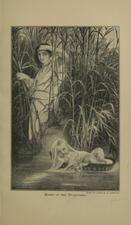
Miriam: Midrash and Aggadah
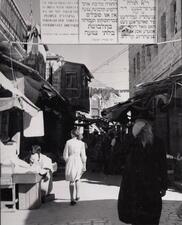
Modesty and Sexuality in Halakhic Literature
Though it is not mentioned in the Bible, modesty (zeni'ut) has become a significant part of modern halakhah, especially in the realm of sexuality. For women, sexual modesty means covering up their bodies. For both men and women, modesty also entails certain behavioral rules. These modesty rules ensure that sex happens in a way that is deemed proper, in the right time and place.
Mother of Micah: Midrash and Aggadah
One midrash posits that Delilah was Micah’s mother, based on two stories in the Bible that mention Delilah and Micah immediately after one another. However, Rashi argued that the timelines of Delilah and Micah’s lives meant that they could not be related.
Naamah: Midrash and Aggadah
The Rabbis have differing views on Noah’s wife Naamah, portraying her as both very beautiful and also as a malevolent seductress. The negative interpretation of Naamah is seen in the later midrash and the Zohar, which describe her as a seducer of men and even of demons.
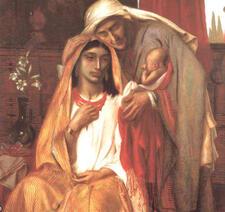
Naomi: Midrash and Aggadah
Midrash portrays Naomi favorably, referring to her as righteous and significant. The Rabbis emphasize her dedication to her faith and her commitment to supporting her gentile daughter-in-law, Ruth. She guides Ruth through her conversion, encourages Ruth to maintain her devotion, and raises the child to whom Ruth gives birth.
Necromancer of Endor: Midrash and Aggadah

Orpah: Midrash and Aggadah
The Rabbinic expansion of the story of Oprah paints her in a generally unfavorable light. This dislike is based on Orpah’s comparison to Ruth, in which Orpah is portrayed as the negative version of her sister-in-law. Orpah’s naming reflects the description that she is promiscuous and brazen.

Peninnah: Midrash and Aggadah
The narrative of Peninnah centers around her interactions with Hannah, as both women were married to Elkanah. Different midrashic traditions tell stories of how Peninnah treated Hannah, most portraying Peninnah as the antagonist. Peninnah is shown irritating Hannah, although some midrashim argue that Peninnah’s actions were a result of her feeling like the least favorite wife.
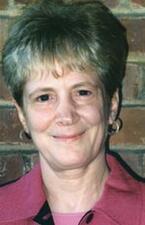
Judith Plaskow
Judith Plaskow is the first Jewish feminist to identify herself as a theologian. Deeply learned in classical and modern Christian theology yet profoundly committed to her own Judaism, Plaskow created a distinctively Jewish theology acutely conscious of its own structure and categories and in dialogue with the feminist theologies of other religions.
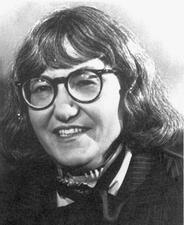
Poetry in the United States
Post-Biblical and Rabbinic Women
IIn antiquity, the treatment of women drew from patriarchal biblical traditions. Despite a few notable exceptions, women had minimal legal rights but were active participants in alternative Jewish sects and could hold office. As rabbinic material was codified, control over women increased, although the literature was not exclusively restrictive towards women.
Puah: Midrash and Aggadah

Queen of Sheba: Midrash and Aggadah
The midrash tells the story of how the Queen of Sheba traveled to meet King Solomon and witness his wisdom, posing several scenarios and riddles to test him. After being impressed by his answers, she commits herself to God and converts.

Rachel: Midrash and Aggadah
Rachel is depicted in the Torah as Jacob’s beautiful and beloved wife. The midrash portrays Rachel as a prophetess, and her statements and the names she gave her sons contain allusions to the future. Rachel’s merit continued to aid Israel even many years after her demise.
Rahab: Midrash and Aggadah
The Rabbis sing paeans of praise of Rahab for her beauty and wisdom. In many midrashim, Rahab comes to symbolize the positive influence Israel exerts on the surrounding Gentile nations, as well as successful conversion. Her ability to mend her ways was exemplary for ensuing generations, who used Rahab’s story to request divine mercy and pardon for their actions.

Rebekah: Midrash and Aggadah
Rebekah, one of the four Matriarchs, is characterized by the Rabbis as a prophet and a righteous woman. The midrash transforms Rebekah from an individual character with a personal story into a symbol of the realization of God’s promise to Abraham.
Rizpah: Midrash and Aggadah
Rizpah features prominently in the narrative of Saul’s death at the hands of the Gibeonites, and her behavior in this episode is highly praised by the Rabbis. Her actions were considered worthy of emulation, and even King David learned from her. Rizpah’s deeds helped save all Israel from the famine.


